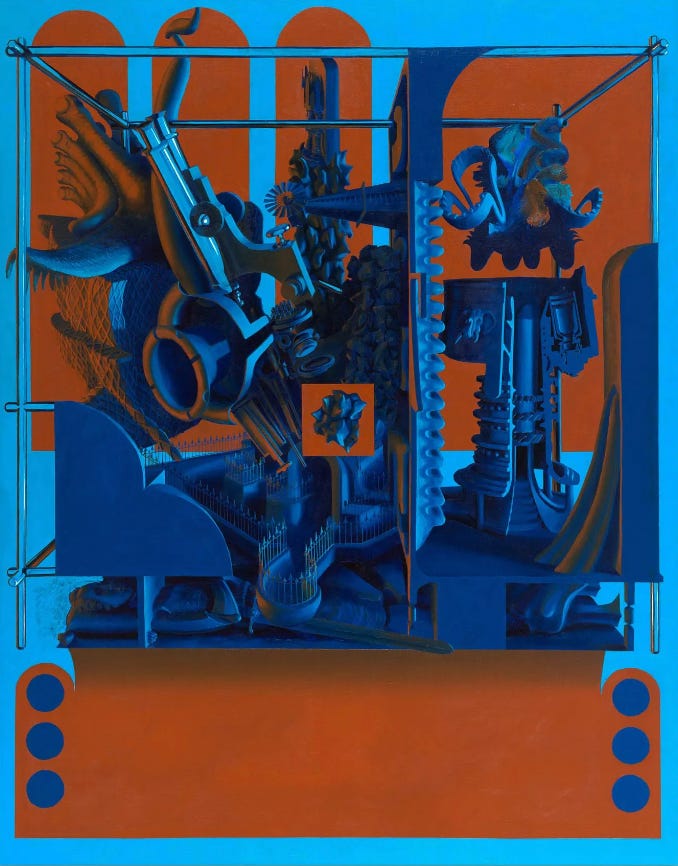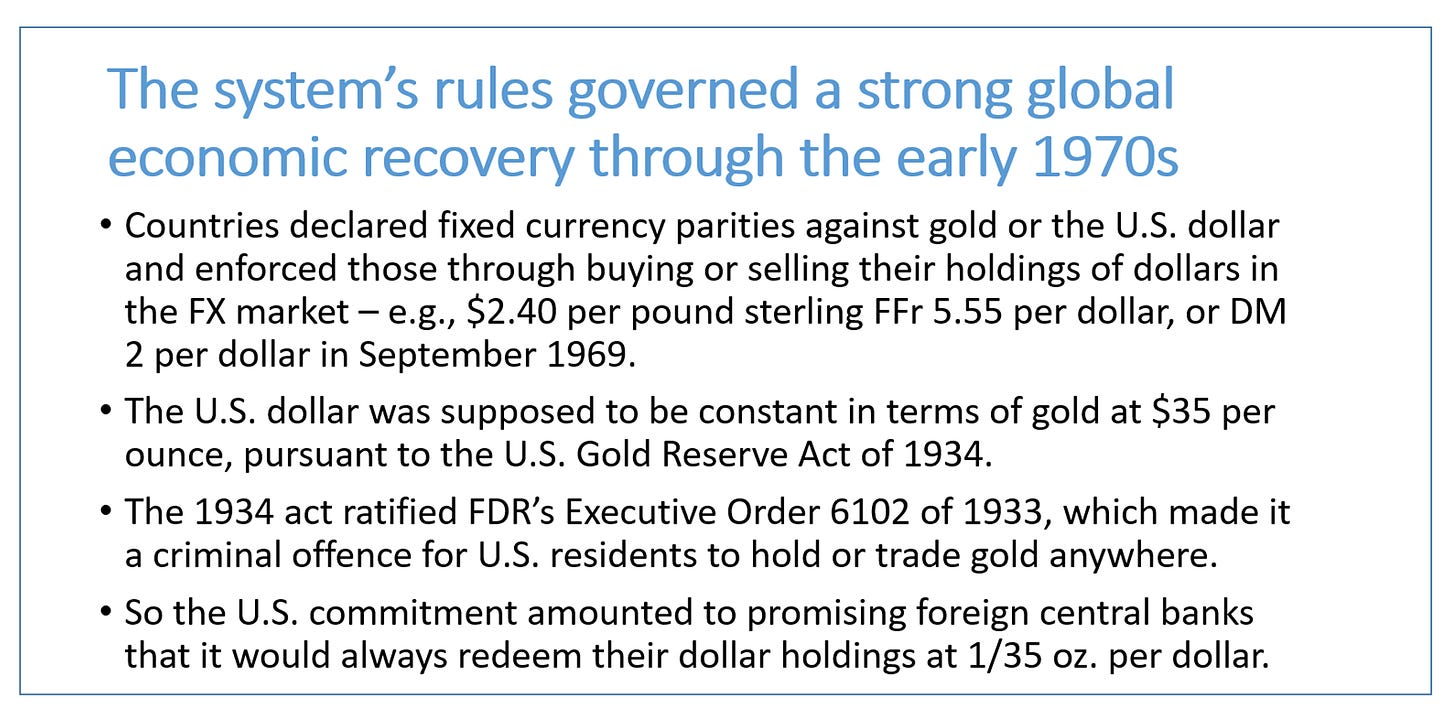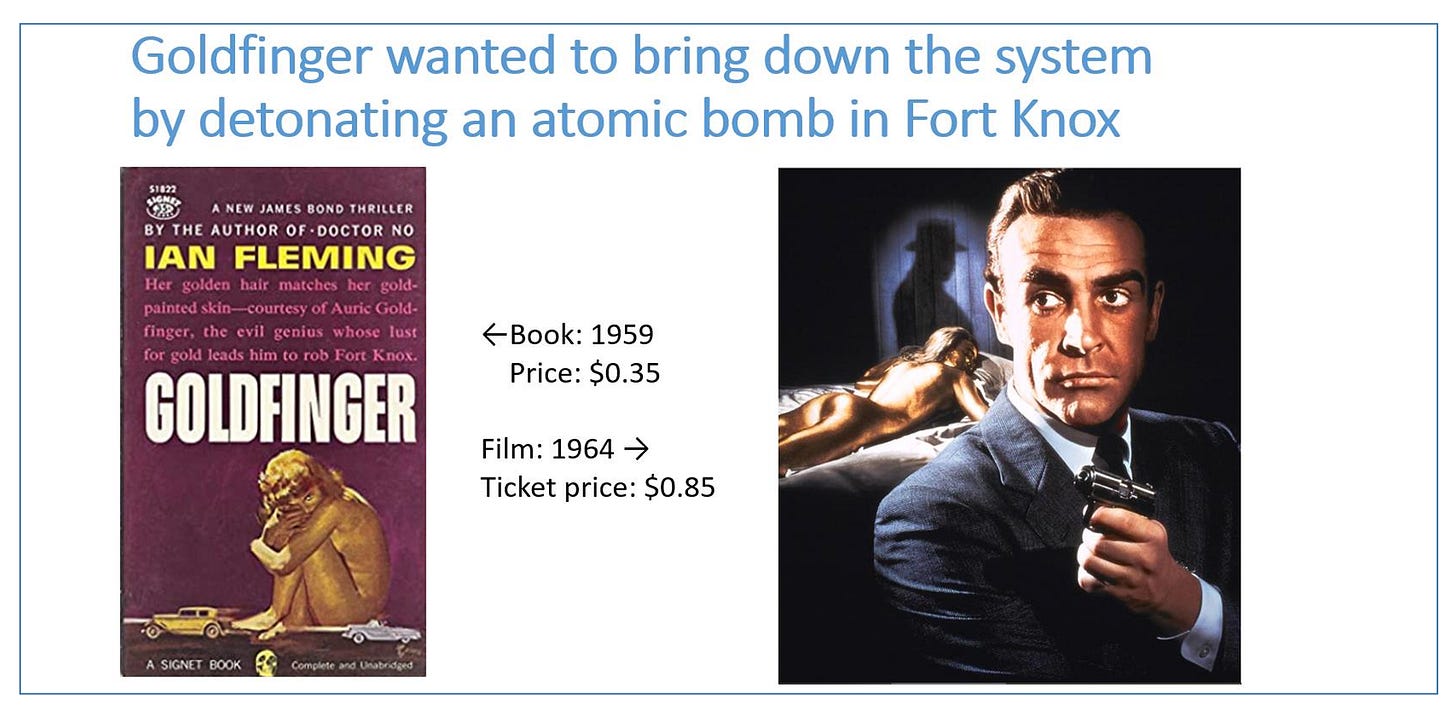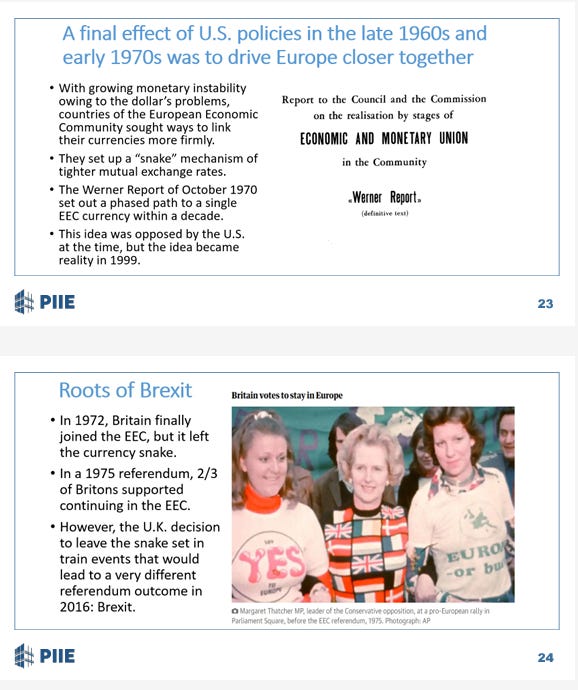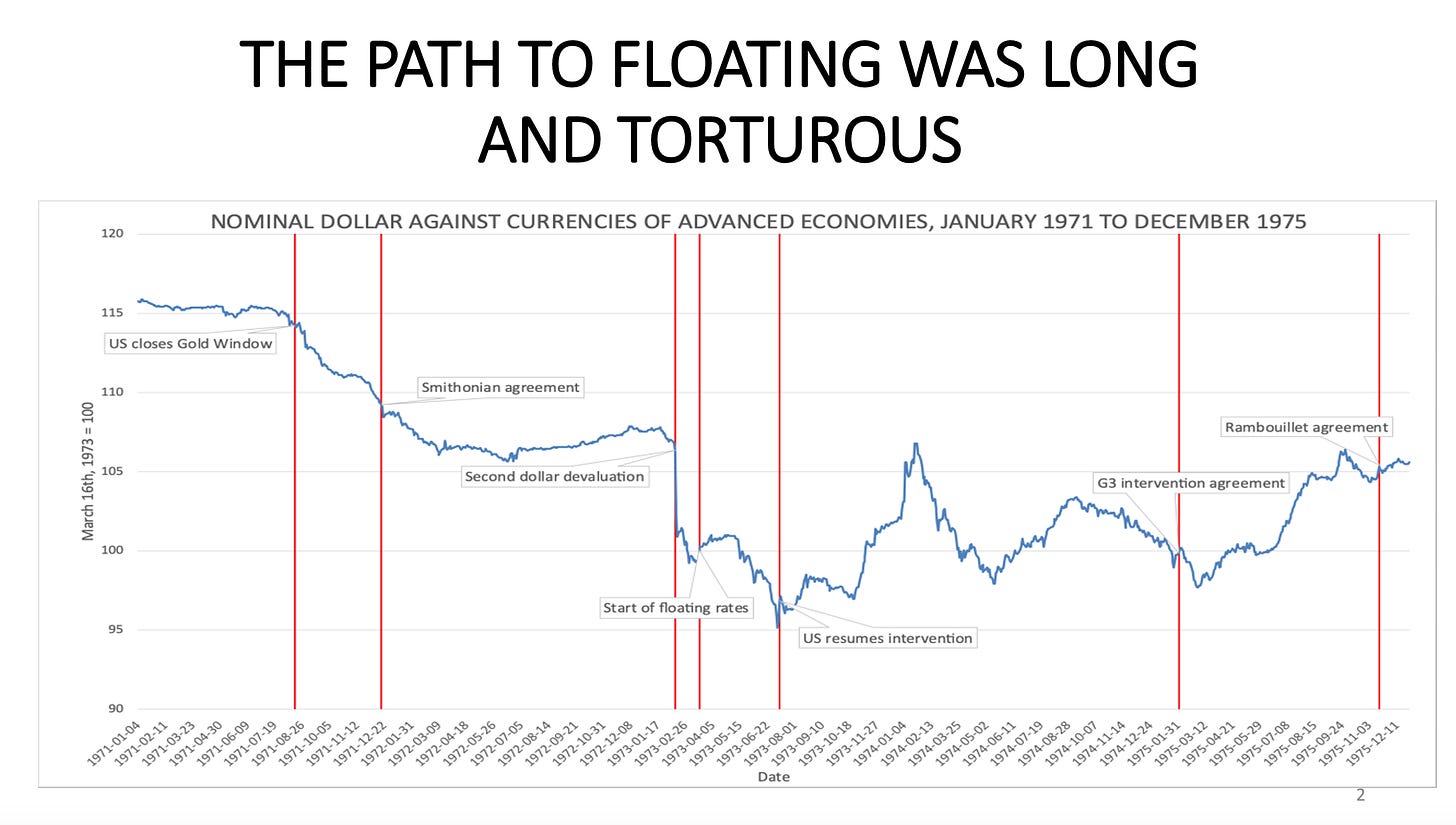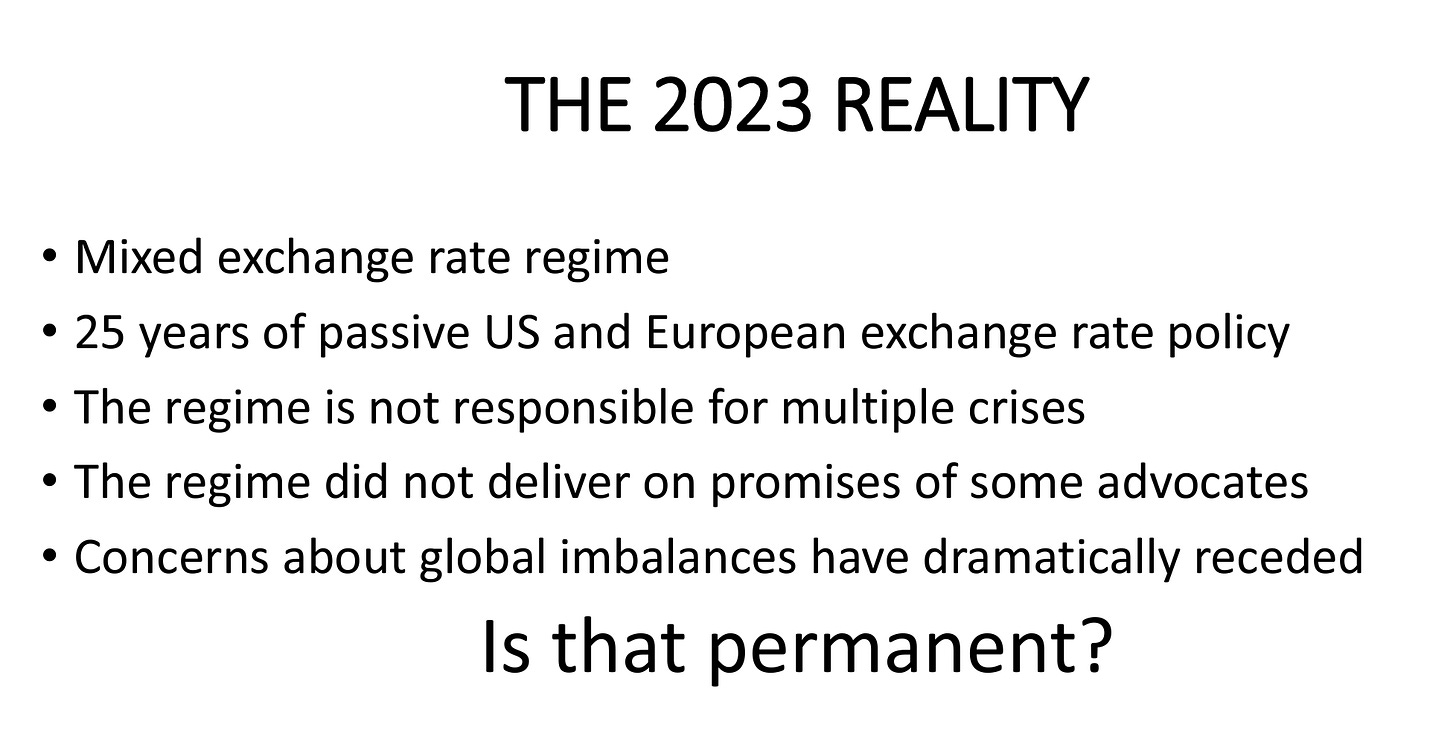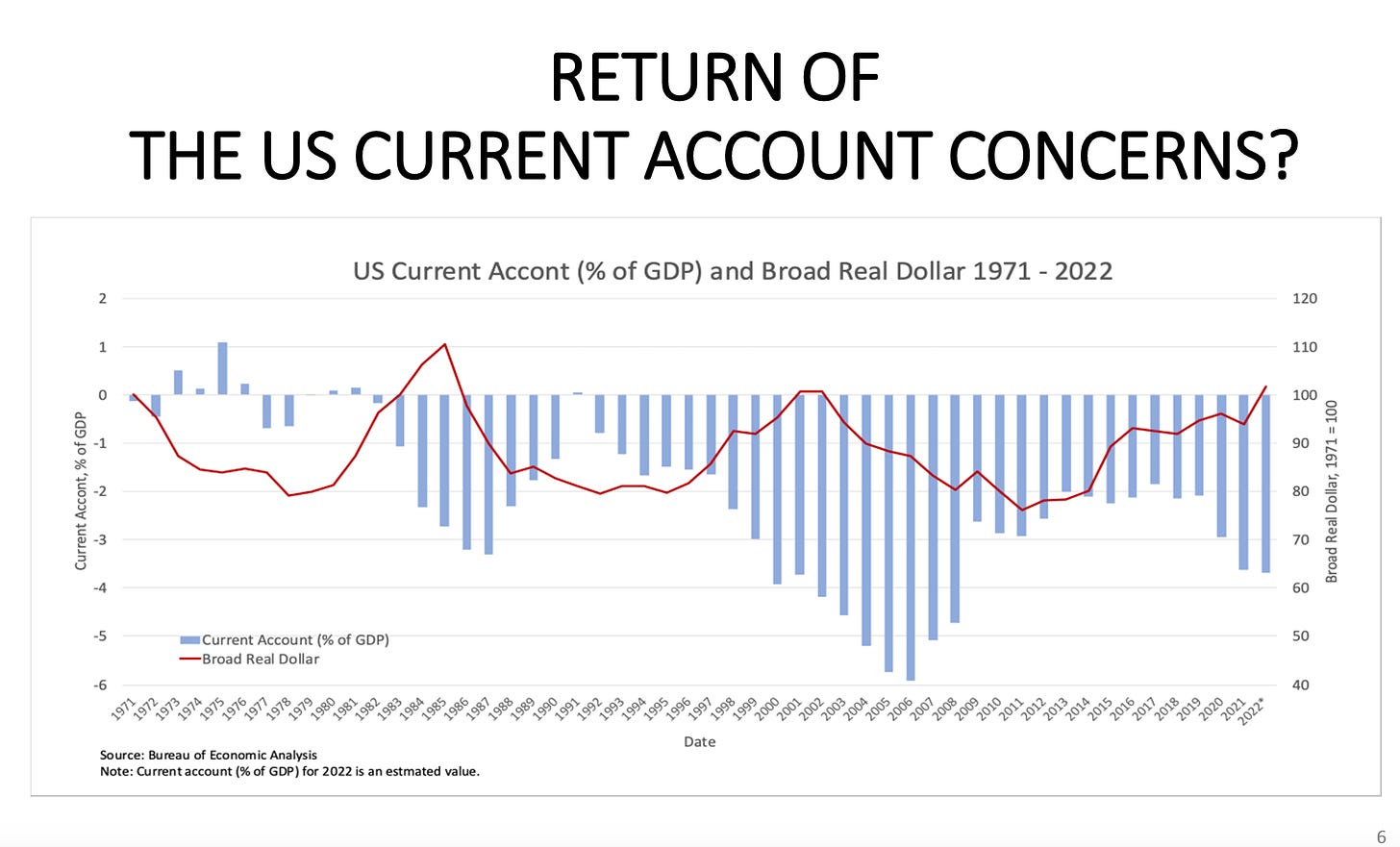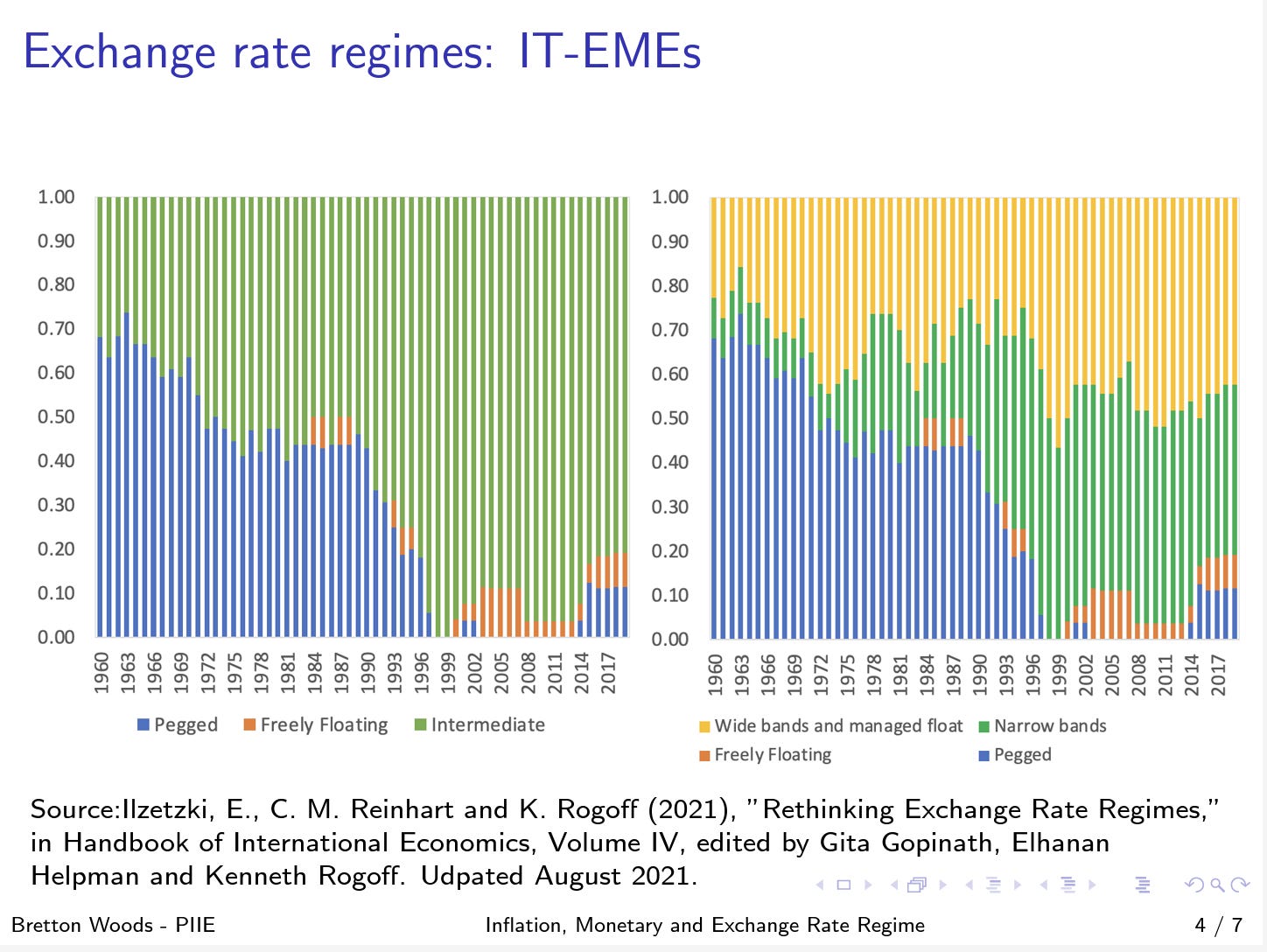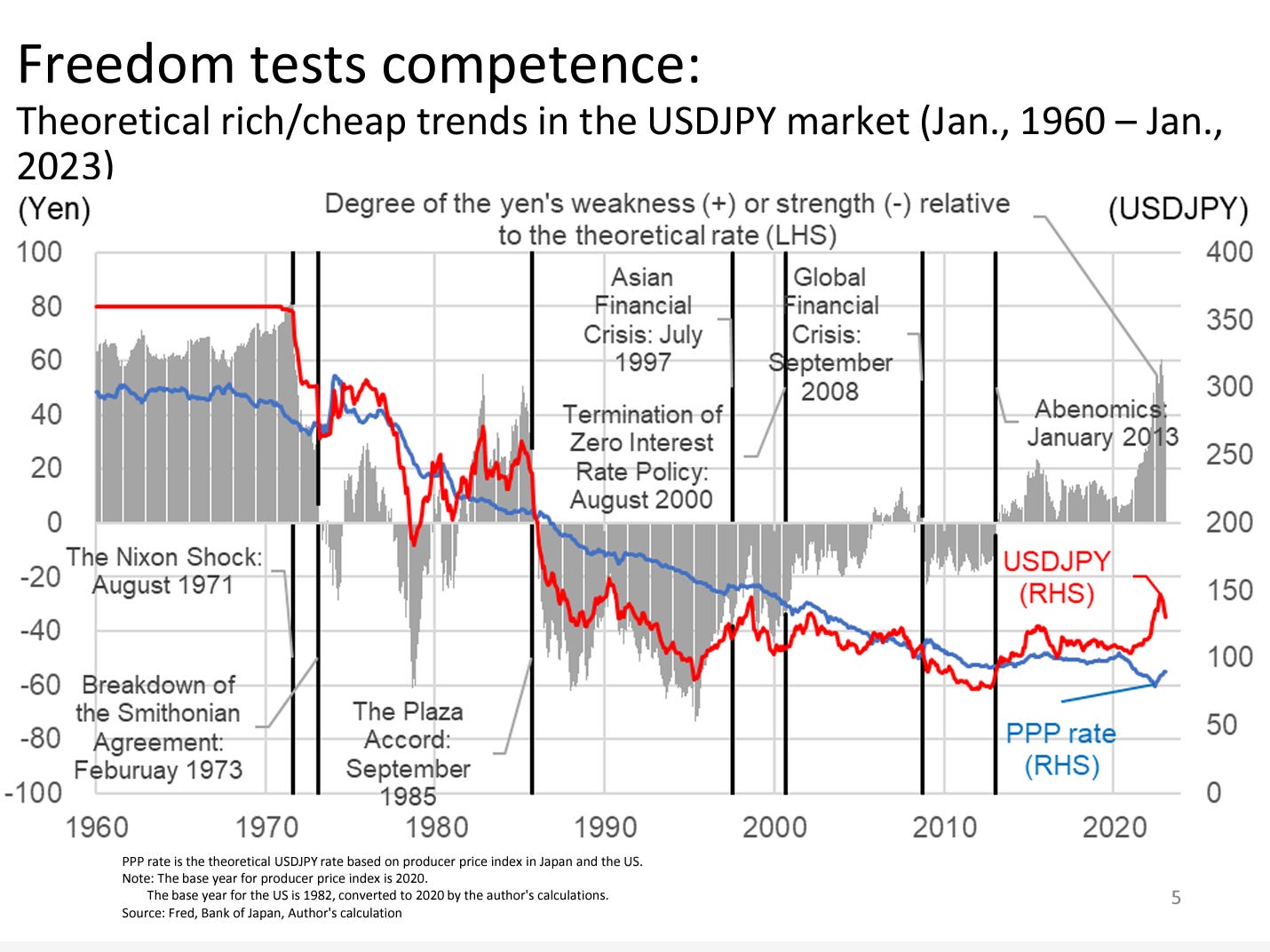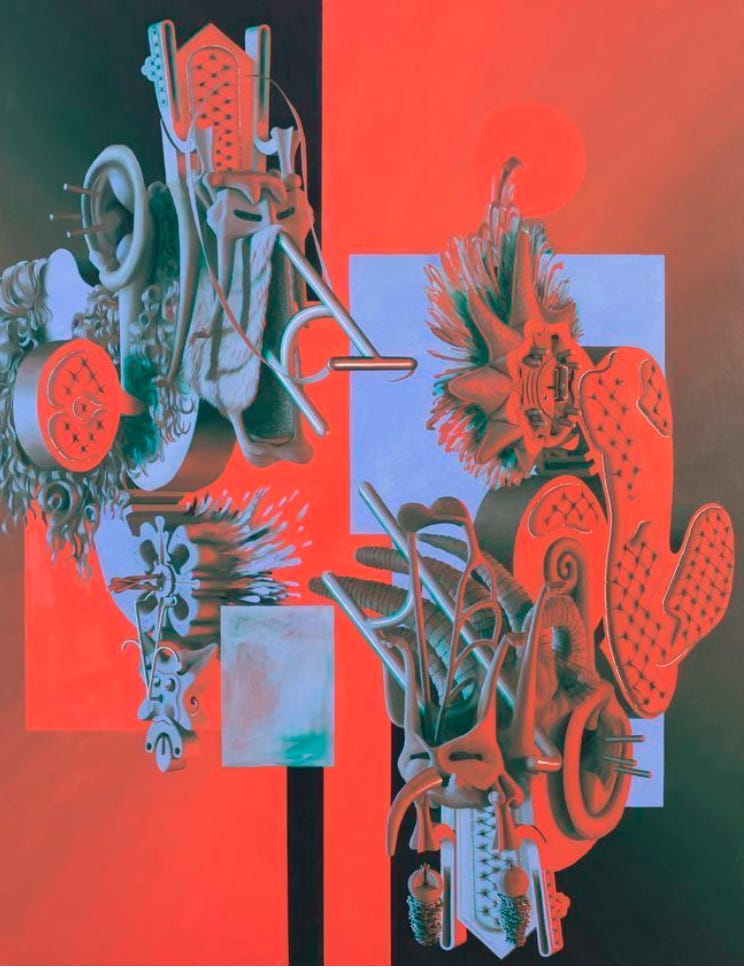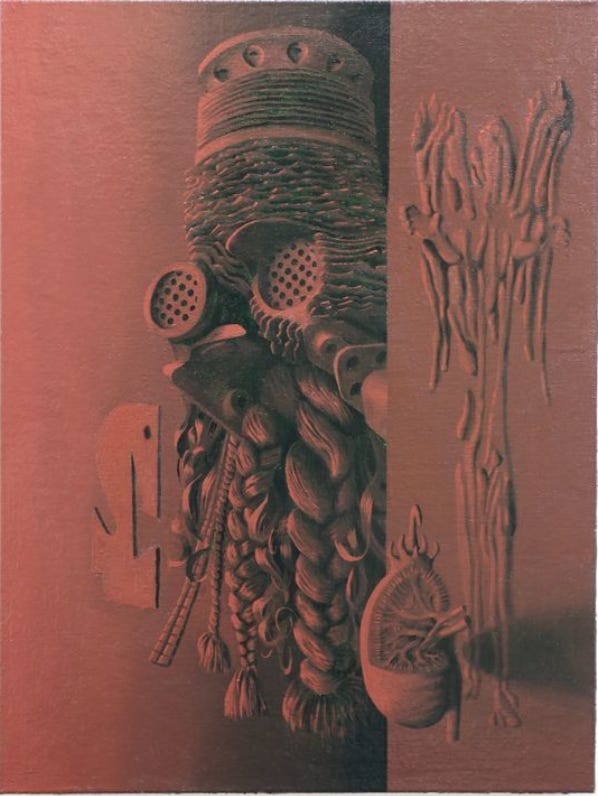Flexible exchange rates, fear of floating, Goldfinger & the reality of the global exchange rate system.
Great links, images, and reading from Chartbook Newsletter by Adam Tooze
Thank you for opening your Chartbook email.
Tom Waring, Roba, 2019, oil on linen, 71 × 63".
Some great slides from a fascinating conference at the PIIE on floating exchange rates at fifty.
From Mauri Obstfeld’s excellent stage setter
Source: PIIE
Edwin Truman on the messy path to the dollar float 1971-1975
The situation in 2023 (Edwin Truman)
Source: PIIE
As far as most emerging markets are concerned we are not under a free floating regime so much as a combination of inflation targeting and various types of managed float.
Source: Jos´e De Gregorio in PIIE
HEY READERS,
THANK YOU for opening the Chartbook email. I hope it brightens your weekend.
I enjoy putting out the newsletter, but tbh what keeps this flow going is the generosity of those readers who clicked the subscription button.
If you are a regular reader of long-form Chartbook and Chartbook Top Links, or just enthusiastic about the project, why not think about joining that group? Chip in the equivalent of one cup of coffee per month and help to keep this flow of excellent content coming.
If you are persuaded to click, please consider the annual subscription of $50. It is both better value for you and a much better deal for me, as it involves only one credit card charge. Why feed the payments companies if we don’t have to!
And when you sign up, there are no more irritating “paywalls”
How a strong dollar and rate hikes by the Fed impact EM
For contributing subscribers only.
Has Japan conquered the fear of freely floating exchange rates?
Source: Masazumi Wakatabe in PIIE
Tom Waring, “Studder”, 2019
Tanalís Padilla. Unintended Lessons of Revolution: Student Teachers and Political Radicalism in Twentieth-Century Mexico. Durham, NC Duke University Press 2022
The creation of rural normal schools in Mexico was born out of a grand educational reform movement, a quest to modernize and broaden the scope of education throughout Mexico, with particular emphasis on historically neglected rural areas. The advent of socialist education under President Lázaro Cárdenas (in office from 1934 to 1940) further propelled the transformative vision of rural normales, weaving practical pursuits with philosophical depths and infusing the curriculum with a deep commitment to community involvement and a relentless critique of societal structures. As such, rural normal schools became vessels of transformation, striving toward realizing social justice, equality, and the empowerment of the underserved and lifting individuals and communities toward a higher plane of existence. But while these spaces functioned as centers of radicalism, Padilla explains how normalistas leveraged their positionality to bring attention to the perennial economic and political issues besetting rural communities even while urban areas were experiencing unprecedented growth and progress. In essence, by expressing their discontent, they were also exposing the PRI’s shortcomings in addressing the needs of marginalized rural populations. Padilla offers a somber depiction of the trials confronting rural normal schools in the post-Cárdenas era, where both domestic and international convulsions and paranoia propelled regimes to actively curtail the political clout of normales by cutting their funding and encroaching on their autonomy. The Cold War’s intensification provided the political fodder to brand student teachers as subversive and any hint of dissent—no matter how justified—as a threat to Mexico’s stability. In this atmosphere, Cold War propagandists fostered an enveloping aura of suspicion and unease around the schools, entwining them with radical political ideologies and framing them as existential threats to the nation’s very fabric.
Source: Fernando Herrera Calderón review in AHR
Tom Waring, “Gossle”, 2019
If you’ve scrolled this far, you know you want to click:


